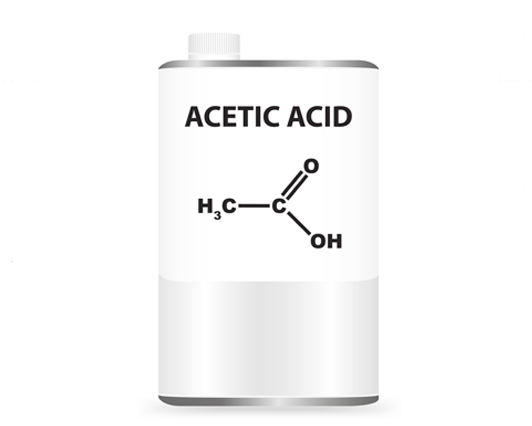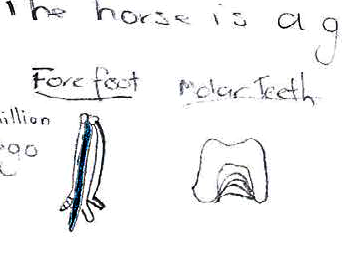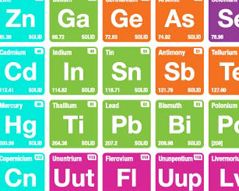- Home
- Resources
- Work samples
- Samples
- Mass of Jupiter – ABOVE
Science
Year 10
Above satisfactory
Mass of Jupiter
Summary of task
Students were asked to perform a scientific investigation related to the motion of objects. Students were required to keep a scientific journal during the investigation and submit a report that conforms with the conventions of a scientific publication.
Two students, after attending a local astronomer's 'members only' viewing night, independently chose the same topic: to determine the mass of Jupiter by observing the orbital patterns of its moons. Both students were supported by mentors from the astronomical society and designed and performed their investigations independently, using slightly different approaches to processing their data. They started to collaborate towards the end of the investigation by sharing their data with each other and they submitted a combined report, referring to their individual methods and results as ‘trial 1’ and ‘trial 2’.
The investigation lasted for a full term and the experimental work was done primarily outside regular school hours.
Achievement standard
By the end of Year 10, students analyse how the periodic table organises elements and use it to make predictions about the properties of elements. They explain how chemical reactions are used to produce particular products and how different factors influence the rate of reactions. They explain the concept of energy conservation and represent energy transfer and transformation within systems. They apply relationships between force, mass and acceleration to predict changes in the motion of objects. Students describe and analyse interactions and cycles within and between Earth’s spheres. They evaluate the evidence for scientific theories that explain the origin of the universe and the diversity of life on Earth. They explain the processes that underpin heredity and evolution. Students analyse how the models and theories they use have developed over time and discuss the factors that prompted their review.
Students develop questions and hypotheses and independently design and improve appropriate methods of investigation, including field work and laboratory experimentation. They explain how they have considered reliability, safety, fairness and ethical actions in their methods and identify where digital technologies can be used to enhance the quality of data. When analysing data, selecting evidence and developing and justifying conclusions, they identify alternative explanations for findings and explain any sources of uncertainty. Students evaluate the validity and reliability of claims made in secondary sources with reference to currently held scientific views, the quality of the methodology and the evidence cited. They construct evidence-based arguments and select appropriate representations and text types to communicate science ideas for specific purposes.
 1
Annotation 1
1
Annotation 1
Summarises investigation in style of abstract, as appropriate for scientific publication 2 Annotation 2
Introduces topic of investigation by describing historical context 3 Annotation 3
Contrasts historical and contemporary models of the universe 4 Annotation 4
Emphasises importance of Galileo’s contributions to development of current scientific understanding of the universe 5 Annotation 5
States mathematical relationship used to calculate result
-
Annotations
-
1
Annotation 1
Summarises investigation in style of abstract, as appropriate for scientific publication -
2
Annotation 2
Introduces topic of investigation by describing historical context -
3
Annotation 3
Contrasts historical and contemporary models of the universe -
4
Annotation 4
Emphasises importance of Galileo’s contributions to development of current scientific understanding of the universe -
5
Annotation 5
States mathematical relationship used to calculate result
 1
Annotation 1
1
Annotation 1
Gives detailed outline of steps required to derive equation used to calculate result by combining several fundamental laws of classical mechanics 2 Annotation 2
Points out importance of result for contemporary applications in space exploration 3 Annotation 3
States aim and hypothesis of investigation 4 Annotation 4
Lists equipment used for investigation
-
Annotations
-
1
Annotation 1
Gives detailed outline of steps required to derive equation used to calculate result by combining several fundamental laws of classical mechanics -
2
Annotation 2
Points out importance of result for contemporary applications in space exploration -
3
Annotation 3
States aim and hypothesis of investigation -
4
Annotation 4
Lists equipment used for investigation
 1
Annotation 1
1
Annotation 1
Assesses potential health and safety risks of investigation 2 Annotation 2
Describes experimental method used in first trial of investigation
-
Annotations
-
1
Annotation 1
Assesses potential health and safety risks of investigation -
2
Annotation 2
Describes experimental method used in first trial of investigation
 1
Annotation 1
1
Annotation 1
Describes steps followed to collect raw data during second trial 2 Annotation 2
Describes steps followed to process data and calculate results for second trial
-
Annotations
-
1
Annotation 1
Describes steps followed to collect raw data during second trial -
2
Annotation 2
Describes steps followed to process data and calculate results for second trial
 1
Annotation 1
1
Annotation 1
Displays raw data and calculated results in tabulated form 2 Annotation 2
Shows how results have been calculated
-
Annotations
-
1
Annotation 1
Displays raw data and calculated results in tabulated form -
2
Annotation 2
Shows how results have been calculated
 1
Annotation 1
1
Annotation 1
Displays results from both trials in combined graph to demonstrate relationship between main variables 2 Annotation 2
Uses statistical indicator of line of best fit to affirm how well experimental results correspond with predictions of Kepler’s 3rd law of planetary motion 3 Annotation 3
Reflects on power of observation and value of such observation along with calculations
-
Annotations
-
1
Annotation 1
Displays results from both trials in combined graph to demonstrate relationship between main variables -
2
Annotation 2
Uses statistical indicator of line of best fit to affirm how well experimental results correspond with predictions of Kepler’s 3rd law of planetary motion -
3
Annotation 3
Reflects on power of observation and value of such observation along with calculations
 1
Annotation 1
1
Annotation 1
Analyses possible reasons for inaccuracy of individual results 2 Annotation 2
Reflects on fairness of investigative method 3 Annotation 3
Reflects on validity of investigative method 4 Annotation 4
Uses scientific understanding and spatial reasoning to estimate impact of possible source of error on result 5 Annotation 5
Analyses further potential source of error 6 Annotation 6
Assesses relative impacts of two sources of error on final result
-
Annotations
-
1
Annotation 1
Analyses possible reasons for inaccuracy of individual results -
2
Annotation 2
Reflects on fairness of investigative method -
3
Annotation 3
Reflects on validity of investigative method -
4
Annotation 4
Uses scientific understanding and spatial reasoning to estimate impact of possible source of error on result -
5
Annotation 5
Analyses further potential source of error -
6
Annotation 6
Assesses relative impacts of two sources of error on final result
 1
Annotation 1
1
Annotation 1
Creates diagrams using specialised software to illustrate experimental conditions and to support argument made about potential source of error
-
Annotations
-
1
Annotation 1
Creates diagrams using specialised software to illustrate experimental conditions and to support argument made about potential source of error
 1
Annotation 1
1
Annotation 1
Reflects on improved accuracy of second trial through use of digital technologies 2 Annotation 2
Explains how quality of optical equipment and environmental conditions impact on data quality 3 Annotation 3
Illustrates range of environmental conditions experienced during investigation to support discussion of data quality 4 Annotation 4
Acknowledges external contributors to investigation
-
Annotations
-
1
Annotation 1
Reflects on improved accuracy of second trial through use of digital technologies -
2
Annotation 2
Explains how quality of optical equipment and environmental conditions impact on data quality -
3
Annotation 3
Illustrates range of environmental conditions experienced during investigation to support discussion of data quality -
4
Annotation 4
Acknowledges external contributors to investigation
 1
Annotation 1
1
Annotation 1
Provides list of online sources that were consulted during investigation
-
Annotations
-
1
Annotation 1
Provides list of online sources that were consulted during investigation
 1
Annotation 1
1
Annotation 1
Keeps record of resources used to conduct introductory research 2 Annotation 2
Identifies key problem of investigation and suggests solution
-
Annotations
-
1
Annotation 1
Keeps record of resources used to conduct introductory research -
2
Annotation 2
Identifies key problem of investigation and suggests solution
 1
Annotation 1
1
Annotation 1
Lists several resources used to research physical laws and mathematical relationships that underpin investigation 2 Annotation 2
Suggests experimental procedure based on initial experiences with available equipment 3 Annotation 3
Includes justification for choosing particular setup parameters 4 Annotation 4
Reflects on suitability of chosen method 5 Annotation 5
Suggests explanation for observed phenomenon based on scientific reasoning
-
Annotations
-
1
Annotation 1
Lists several resources used to research physical laws and mathematical relationships that underpin investigation -
2
Annotation 2
Suggests experimental procedure based on initial experiences with available equipment -
3
Annotation 3
Includes justification for choosing particular setup parameters -
4
Annotation 4
Reflects on suitability of chosen method -
5
Annotation 5
Suggests explanation for observed phenomenon based on scientific reasoning
 1
Annotation 1
1
Annotation 1
Keeps record of experimental conditions faced during investigation 2 Annotation 2
Supports subjective observations with objective data from external source 3 Annotation 3
Researches crucial aspects of investigation and identifies key data
-
Annotations
-
1
Annotation 1
Keeps record of experimental conditions faced during investigation -
2
Annotation 2
Supports subjective observations with objective data from external source -
3
Annotation 3
Researches crucial aspects of investigation and identifies key data
 1
Annotation 1
1
Annotation 1
Identifies key challenge of experimental method and suggests solution 2 Annotation 2
Improves data collection procedure based on initial experiences with available equipment 3 Annotation 3
Adds data processing steps to experimental procedure
-
Annotations
-
1
Annotation 1
Identifies key challenge of experimental method and suggests solution -
2
Annotation 2
Improves data collection procedure based on initial experiences with available equipment -
3
Annotation 3
Adds data processing steps to experimental procedure
 1
Annotation 1
1
Annotation 1
Provides example of important data processing step 2 Annotation 2
Initiates collaboration with fellow student working on same investigation and acknowledges colleague’s contribution 3 Annotation 3
Displays images of experimental setup and of system used to manually record observations
-
Annotations
-
1
Annotation 1
Provides example of important data processing step -
2
Annotation 2
Initiates collaboration with fellow student working on same investigation and acknowledges colleague’s contribution -
3
Annotation 3
Displays images of experimental setup and of system used to manually record observations
 1
Annotation 1
1
Annotation 1
Provides images of experimental setup 2 Annotation 2
Reflects on effectiveness of experimental method and equipment used 3 Annotation 3
Selects data points best suited for determining key parameters of investigation
-
Annotations
-
1
Annotation 1
Provides images of experimental setup -
2
Annotation 2
Reflects on effectiveness of experimental method and equipment used -
3
Annotation 3
Selects data points best suited for determining key parameters of investigation
 1
Annotation 1
1
Annotation 1
Adopts data processing method suggested by mentor
-
Annotations
-
1
Annotation 1
Adopts data processing method suggested by mentor
 1
Annotation 1
1
Annotation 1
Applies data processing method suggested by mentor 2 Annotation 2
Calculates result and determines its accuracy as percentage deviation from current accepted value
-
Annotations
-
1
Annotation 1
Applies data processing method suggested by mentor -
2
Annotation 2
Calculates result and determines its accuracy as percentage deviation from current accepted value





